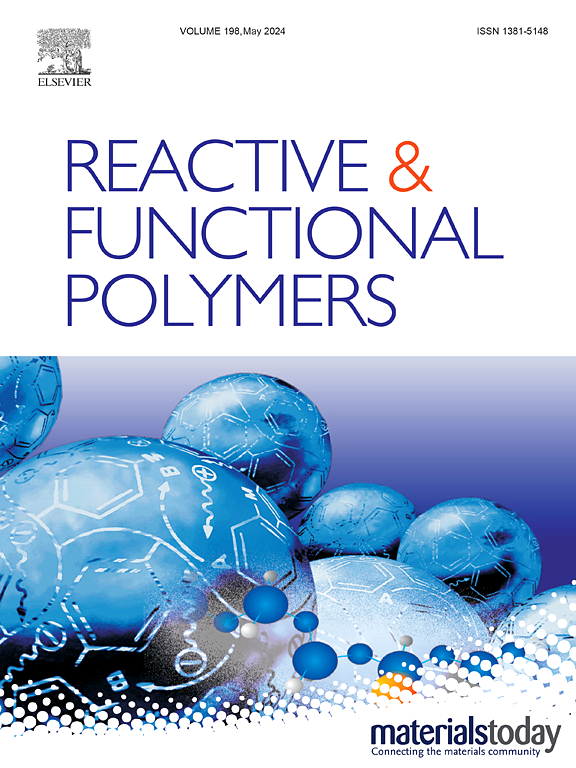Rheology-based analysis of the effect of different tackifying resins on the cross-linking behavior of UV SBS pressure-sensitive adhesives
IF 4.5
3区 工程技术
Q1 CHEMISTRY, APPLIED
引用次数: 0
Abstract
At present, in the field of ultraviolet (UV) curing pressure-sensitive adhesive (PSA), UV light curing polystyrene-butadiene-styrene (SBS) hermoplastic elastomer PSA is less studied and the effect of tackifying resin on the process of UV curing SBS PSA is almost not reported. In this paper, five kinds of tackifying resins were selected, namely C5, HC5, pentaerythritol rosin esters (PRE), HDCPD, HC9 and the structural and molecular weight changes of different tackifying resins compounded with 1 %wt photoinitiator (819) after UV treatment with different time were investigated. In addition, the infrared structure, morphological characterization, rheological and adhesive properties of different tackifying resins PSA with the addition of 819 after irradiation under a UVA-365 nm LED light source for different time were also studied and analyzed. The results show that C5 and HC5 resins are very susceptible to photo-thermal oxidation and poor compatibility with the SBS system and can promote the cross-linking of SBS under UV irradiation. PRE and HDCPD are susceptible to photo-thermal oxidation and self-polymerization under UV irradiation, which hinders the cross-linking process of SBS. HC9 resins have no photoreactivity under UV irradiation and their molecular weight is unchanged, which has less influence on the cross-linking process of SBS. The adhesive properties of HC9 PSA also were effectively improved after UV irradiation, with the ring initial adhesion increasing from 24.94 N to 30.02 N, the 180° peel strength increasing from 0.75 N/mm to 1.15 N/mm, and the holding time increasing from 120 h to more than 500 h.

不同增粘树脂对UV SBS压敏胶交联性能影响的流变学分析
目前,在紫外光固化压敏胶(PSA)领域,紫外光固化聚苯乙烯-丁二烯-苯乙烯(SBS)热塑性弹性体PSA的研究较少,增粘树脂对SBS - PSA紫外光固化过程的影响几乎没有报道。本文选择了C5、HC5、季戊四醇松香酯(PRE)、HDCPD、HC9 5种增粘树脂,研究了不同增粘树脂与1% wt光引发剂(819)复配后,经不同时间紫外光处理后的结构和分子量变化。此外,还研究和分析了在UVA-365 nm LED光源照射不同时间后,添加819的不同增粘树脂PSA的红外结构、形态表征、流变学和粘接性能。结果表明,C5和HC5树脂极易发生光热氧化,与SBS体系的相容性较差,在紫外线照射下可促进SBS的交联。PRE和HDCPD在UV照射下容易发生光热氧化和自聚合,阻碍了SBS的交联过程。HC9树脂在UV照射下无光反应性,分子量不变,对SBS交联过程影响较小。紫外辐照后,HC9 PSA的粘接性能也得到了有效改善,环初始粘接力从24.94 N增加到30.02 N, 180°剥离强度从0.75 N/mm增加到1.15 N/mm,保温时间从120 h增加到500 h以上。
本文章由计算机程序翻译,如有差异,请以英文原文为准。
求助全文
约1分钟内获得全文
求助全文
来源期刊

Reactive & Functional Polymers
工程技术-高分子科学
CiteScore
8.90
自引率
5.90%
发文量
259
审稿时长
27 days
期刊介绍:
Reactive & Functional Polymers provides a forum to disseminate original ideas, concepts and developments in the science and technology of polymers with functional groups, which impart specific chemical reactivity or physical, chemical, structural, biological, and pharmacological functionality. The scope covers organic polymers, acting for instance as reagents, catalysts, templates, ion-exchangers, selective sorbents, chelating or antimicrobial agents, drug carriers, sensors, membranes, and hydrogels. This also includes reactive cross-linkable prepolymers and high-performance thermosetting polymers, natural or degradable polymers, conducting polymers, and porous polymers.
Original research articles must contain thorough molecular and material characterization data on synthesis of the above polymers in combination with their applications. Applications include but are not limited to catalysis, water or effluent treatment, separations and recovery, electronics and information storage, energy conversion, encapsulation, or adhesion.
 求助内容:
求助内容: 应助结果提醒方式:
应助结果提醒方式:


